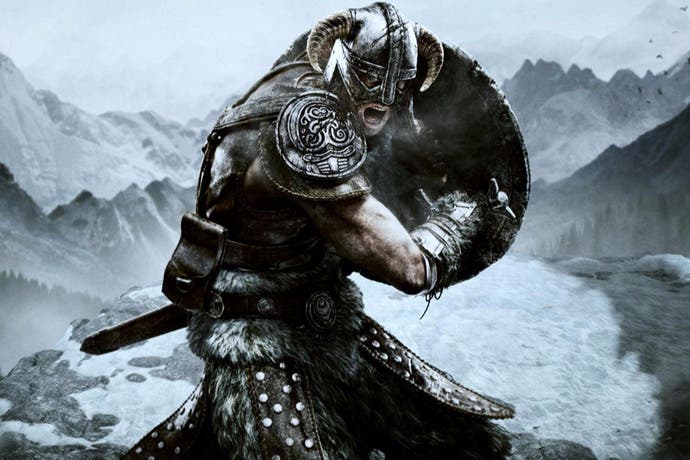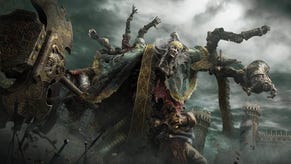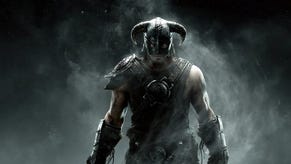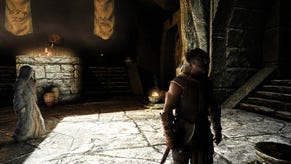Face-Off: Skyrim Special Edition
PS4 and Xbox One take on the maxed out PC experience.
Skyrim arrives on current-gen consoles and gets a PC upgrade in the form of the Special Edition, a remaster of sorts featuring several visual upgrades over the original game. New lighting and effects work is woven into the existing rendering pipeline, while some of the core assets are reworked. Draw distances and streaming are also improved too, adding another layer of refinement to the presentation. It all adds up to a tangible boost in visual quality over the original game, especially when looking at the last-gen console versions. But with that said, what's the best way to play the game? And which console provide us with the better overall experience?
Kicking things off with PS4 and Xbox One, and it's immediately clear that both versions deliver an identical presentation with asset quality and effects work nicely matching up. A native 1080p resolution is also in place, bringing a welcome increase in clarity over the 720p presentation on last-gen machines. Resolution also appears to be locked to 1080p too, although, just as in Fallout 4 it's possible that a dynamic framebuffer could still be in play, though we didn't find any drops below 1080p during our gameplay session.
As such, image quality is solid, with the game's temporal anti-aliasing solution practically eliminating shimmer and other edge-related artefacts across the entirety of the scenes. However, the downside is that this post-process AA implementation creates a soft look that lacks the per-pixel sharpness we expect from a native image. Stacked up against the original PC Skyrim with its MSAA implementation, there's no doubt that the presentation is considerably less focused.
It's the same story for the PC version on that front - MSAA is gone - and we can confirm that the highest temporal AA option here is a match for the implementation running on consoles. At 1080p, the image appears quite soft, but this becomes less of an issue when running at higher resolutions, where the extra pixel density brings with it greater sharpness and clarity over the PS4 and Xbox One versions.
The ability to power past 1080p is one of the biggest benefits of the PC release, as the core artwork and majority of effects are essentially identical to what we see on consoles. For example, all three versions run with a high level of anisotropic filtering, leading to crisp textures across ground surfaces and objects viewed from oblique angles, while normal map and texture quality in general is reasonably high, with a fair amount of detail on show.
In terms of PS4 and Xbox One, both versions feature the same level of graphical quality throughout, with only performance providing a minor point of difference. However, the PC version does feature a few standard refinements we've come to expect from games running on the platform. For example, shadow quality gains a small boost with these elements appearing sharper, but without deviating from the smooth organic look present on consoles. It's a nice touch that is more appreciable when running at 1440p or above, but still delivers a tangible difference at 1080p.
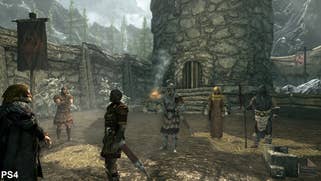

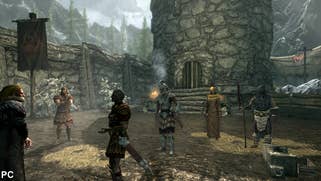
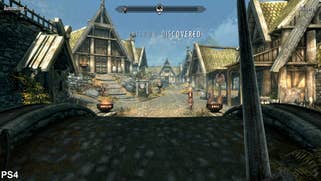



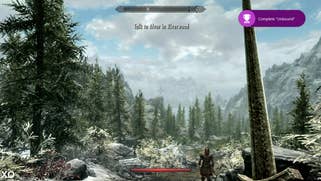
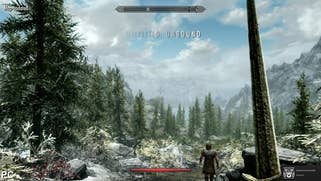


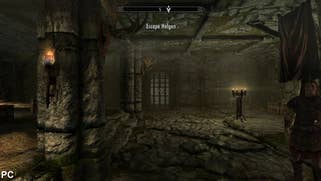
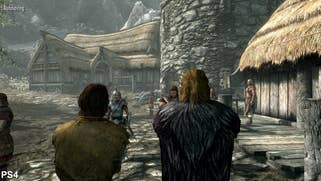
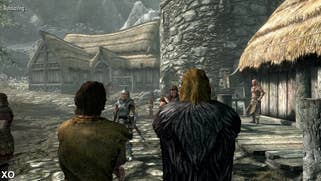
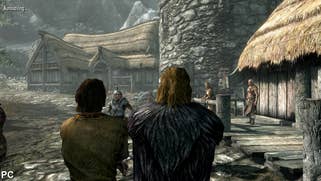



Draw distances are also fleshed out with more in the way of foliage and geometric objects visible at range, whereas on PS4 and Xbox One the game's LOD system is slightly more aggressive in culling these details. This leads to slightly more in the way of pop-in, though this aspect of the game is improved over the original PC version. Furthermore, volumetric lighting is also given a slightly stronger implementation, which creates a little more bloom within light shafts over the PS4 and Xbox One versions.
Performance wasn't a strong point of Skyrim on last-gen consoles, with neither version delivering a solid 30fps for extended periods. And on top of that PS3 owners were given a pretty raw deal, with performance degrading down to unplayable levels after many hours of gameplay on a single save file - the infamous rimlag issue which infuriated many fans at the time. While it's too early to see if this problem will appear in the Special Edition on consoles (we suspect that the comparatively lavish amounts of RAM will ensure that this is a non-issue), performance is much more consistent than the last-gen versions, especially the lacking PS3 game.
Once again Bethesda target 30fps and for the most part the game sticks very closely to this frame-rate. Performance isn't a complete lock, though, and there is still some discernable stutter on occasion caused by small 1-2fps drops, which appear across both platforms. Here the PS4 game is a touch smoother, but performance isn't an issue on either platform and the experience is almost identical in this regard.
The lack of a 60fps update is disappointing for a remaster, but at the same time it's understandable why performance is limited to 30fps instead. The Creation engine comes with a lot of legacy baggage dating back to the likes of Fallout 3 and Oblivion, while the many of the systems are CPU-bound or even limited by storage IO, with elements such as tracking interactive objects in the game world and streaming in world data limiting the potential to target high frame-rates on consoles. Thankfully, frame-rates are mostly stable and performance isn't an issue.
That said, for those who live and die by playing at 60fps, the PC game offers up the ability to do this. And indeed, the experience is greatly improved when moving beyond the 30fps limitation on PS4 and Xbox One. The additional fluidity and faster controller response not only makes moving across the world a smoother experience, but combat feels more polished and less jerky when dispatching multiple foes. It's a nice step up over consoles that benefits various aspects of the game beyond visual smoothness alone. Also, in common with other Creation Engine titles, the game locks v-sync and prefers to run at 60fps.
It's also worth remembering that Skyrim Special Edition is also set to fully support PlayStation 4 Pro. Bethesda has promised native 4K support there - suggesting either a massive optimisation push for the Pro hardware, or a certain level of under-utilisation on base hardware (not really an issue considering that this is a 2011 game at its heart). We'll be returning to Skyrim very soon with a full breakdown of what PS4 Pro offers users of both 1080p and 4K displays.
Skyrim Special Edition - the Digital Foundry verdict
All told, Skyrim Special Edition is a nice upgrade over the original game, with console owners finally getting a visually improved experience to match and occasionally exceed the base PC edition running at ultra setting. Indeed, both versions serve up a very good experience where the core gameplay and graphics are concerned. And while the 30fps limit may disappoint some fans, it's nice to finally play the game on consoles without large variances in performance impacted our enjoyment of the title.
However, it is worth pointing out that bugs and glitches remain - one of our run-throughs of the initial scripted intro required a restart when the dragon didn't smash through the castle, blocking progress. During a synchronised capture running the old PC and new PS4 titles simultaneously, we noticed the same clipping bug kick off on both systems suggesting that many of the issues afflicting the original release haven't been addressed, and have been ported to PS4 and Xbox One.
In terms of comparisons though, there's nothing meaningful to separate the two consoles - though PS4's audio is cleaner than both PC and Xbox One, which in turn are downgraded from the original title. However, in terms of playability the Xbox One version does have a clear edge in one area - mod support is considerably better. It's possible to have mods are large as 2GB installed on Xbox One, and these user-made creations can also use assets not found in the original game. On PS4, the maximum size is limited to 800MB, and mods can only use assets pulled directly from the game, significantly limited the scope and creativity on offer. As a result, those looking to explore the potential of using modded content are best served with the Xbox One game.
Of course, these issues aren't present on the PC, which features a vast modding community designing all kinds of interesting ways to expand upon the base game. Combined with the ability to play at 60fps and run at ultra-high resolutions, this version delivers the best overall package. That said, all three versions offer up a solid experience and provides a tangible visual upgrade over the original game worth checking for fans of the series.
